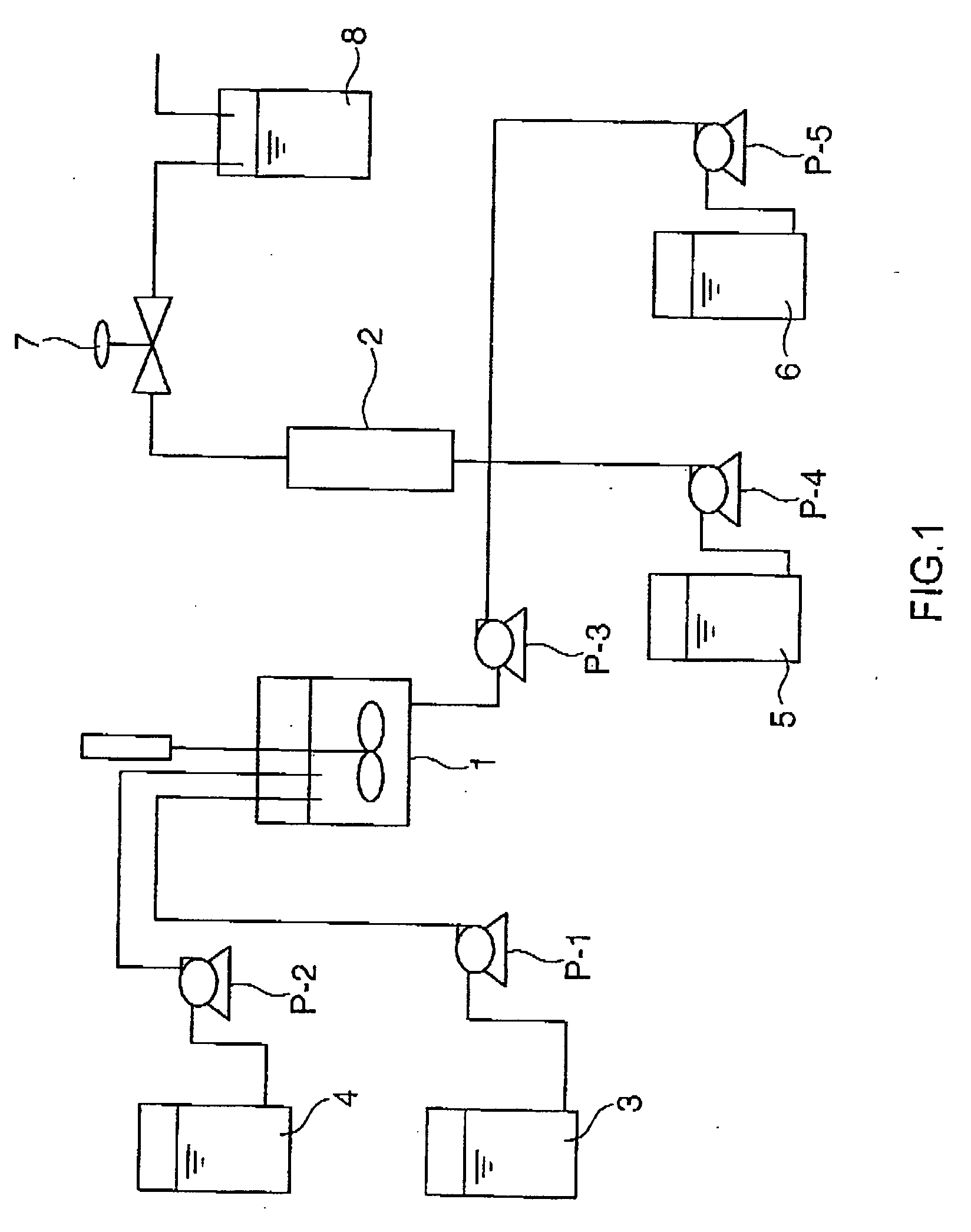Method for producing glycolic acid
a technology of glycolic acid and production method, which is applied in the field of glycolic acid, can solve the problems of large amount of labor and energy, complicated steps constituting this method, and the need to produce glycolic acid, and achieves the effects of easy production and purification steps, low energy consumption, and high production yield of glycolic acid and accumulated concentration of glycolic acid
- Summary
- Abstract
- Description
- Claims
- Application Information
AI Technical Summary
Benefits of technology
Problems solved by technology
Method used
Image
Examples
example 1
First Step
[0123]A glycol acid synthesis reaction was performed in reaction equipment as illustrated in FIG. 1.
[0124]In a first step, glycolonitrile is synthesized in Reactors 1 and 2. In Reactor 1, hydrocyanic acid is converted into an aqueous solution thereof, while in Reactor 2, cyanhydrin reaction is carried out to generate glycolonitrile. Reactor 1 is a jacketed stainless-steel autoclave having an inner volume of 200 mL and equipped with a stirrer. Reactor 1 was fed with Pure water 3 at a rate of feed of 56.2 (g / hr) by Pump P-1 and Hydrocyanic acid 4 at a rate of feed of 44.4 (g / hr) by Pump P-2, whereby an aqueous solution of hydrocyanic acid was obtained. Hydrocyanic acid employed here had a purity of 99.5 wt. % and contained 600 ppm of acetic acid, 300 ppm or sulfur dioxide and 2000 ppm of acrylonitrile as impurities. The temperature of Reactor 1 was set at 17° C.
[0125]Reactor 2 is a jacketed coiled-pipe-type reactor having an inner volume of 120 mL and warm water of 47° C. wa...
example 2
[0130]A glycolic acid was prepared in a similar manner to Example 1 except that the aqueous solution of glycolonitrile obtained in the first step was fed in the second step one day after preparation of the aqueous solution. The glycolic acid was obtained in a yield of 99% based on glycolonitrile, had a quality indicator of 0.008 and was not colored.
example 3
[0131]A glycolic acid was prepared in a similar manner to Example 1 except that the aqueous solution of glycolonitrile obtained in the first step was fed in the second step three days after preparation of the aqueous solution. The glycolic acid was obtained in a yield of 98% based on glycolonitrile, had a quality indicator of 0.013 and was not colored.
PUM
| Property | Measurement | Unit |
|---|---|---|
| pH | aaaaa | aaaaa |
| pH | aaaaa | aaaaa |
| molar ratio | aaaaa | aaaaa |
Abstract
Description
Claims
Application Information
 Login to View More
Login to View More - R&D
- Intellectual Property
- Life Sciences
- Materials
- Tech Scout
- Unparalleled Data Quality
- Higher Quality Content
- 60% Fewer Hallucinations
Browse by: Latest US Patents, China's latest patents, Technical Efficacy Thesaurus, Application Domain, Technology Topic, Popular Technical Reports.
© 2025 PatSnap. All rights reserved.Legal|Privacy policy|Modern Slavery Act Transparency Statement|Sitemap|About US| Contact US: help@patsnap.com

